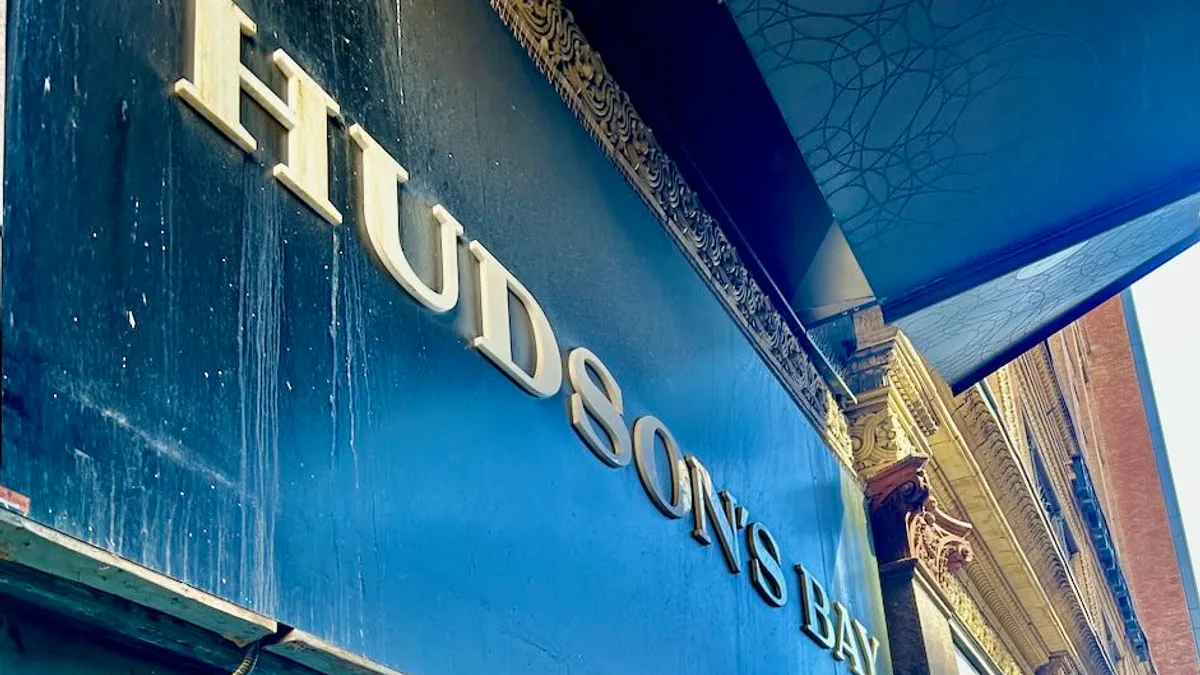WOODLAND HILLS, California — When Amazon Fresh launched in 2020, all the focus seemed to be on technology like its Dash Carts, Ask Alexa terminals and Just Walk Out frictionless checkout systems.
But amid all the cutting-edge innovation, some of the basic principles of good grocery retailing got overlooked.
Three years, 44 stores and a highly publicized pause on expansion later, the fledgling grocery brand is now rushing to integrate time-honored grocery merchandising practices into its stores. This revamp includes improving interior lighting, adding more baked goods and prepared foods, adding self-checkout stands and placing themed displays throughout the sales floor.
Many Amazon Fresh stores have “gaps” in their assortment that have prevented shoppers from building full baskets, said Claire Peters, vice president of retail at Amazon, in an interview.
During a tour of a newly updated Amazon Fresh store in Woodland Hills, California, Peters noted the addition of around 3,000 grocery products, including snacks and health and beauty care items, that aim to round out those shopping trips for customers.
In years past, Amazon Fresh shoppers said they weren’t able to find everything they needed at the stores to complete their Thanksgiving meal, she noted.
“There are some clear fundamentals that every grocer needs to get right. And we need to improve on that,” said Peters.
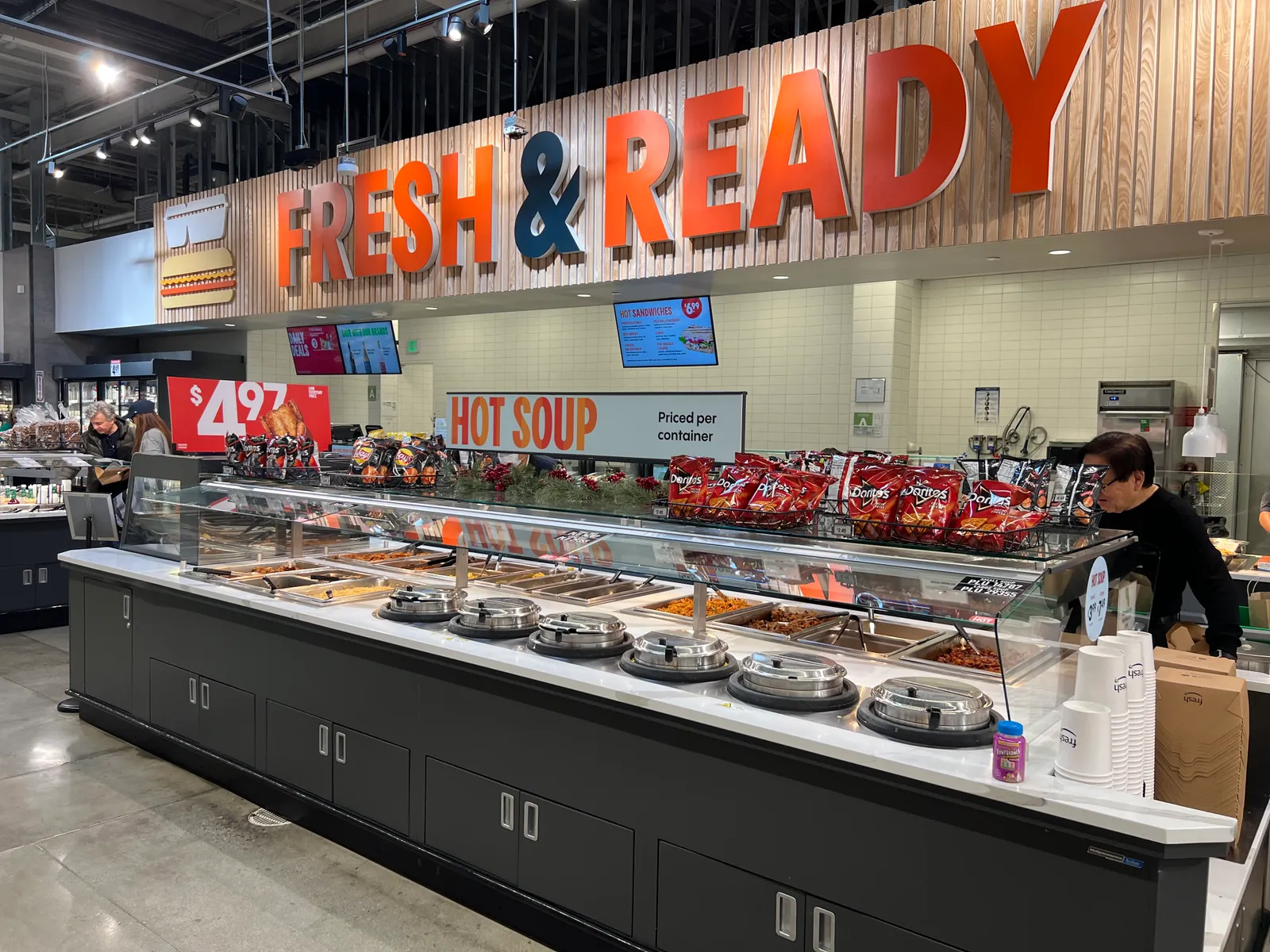
Peters, who started her position at Amazon earlier this year, brings nearly three decades of experience in the grocery industry, most recently as a senior executive at Australia’s Woolworths. She and her team at Amazon have played a key role in planning and executing the latest store updates, which are being tested in the Woodland Hills location as well as two stores in the Chicago area.
Two additional Southern California locations — a store in Irvine and another in Pasadena — have also rolled out the updates, and early next year Amazon Fresh plans to begin updating the rest of its locations across eight states and Washington, D.C., Peters said.
Peters also said she’s “cautiously optimistic” that Amazon Fresh will begin to open new stores next year after the company paused its rollout in February.
“We want to make sure we've absolutely got it right in these stores. But if we don’t, we will iterate, change, and we’ll go again.”
Balancing technology and grocery merchandising
The speed of the store refresh effort underscores its urgency as Amazon prioritizes grocery retail. Within a matter of months after joining the company in February, Peters, along with her team, developed the changes that are now making their way into those select locations.
“What was clear is we weren’t offering the basic grocery shopping experience well enough or consistently enough,” Peters said.
Many shoppers also said the stores felt “cold,” she noted. The updated Amazon Fresh stores have a softer aesthetic, including more colorful department signage, enhanced lighting and festive standalone displays positioned throughout the retail floor. There are also more prepared foods and hot dishes. The Woodland Hills store offers packaged sushi from Wild Blue; a hot food bar offering pizza, pasta and sandwiches like a meatball marinara; and a bakery case with fresh-made items from L.A.’s Röckenwagner Bakery.
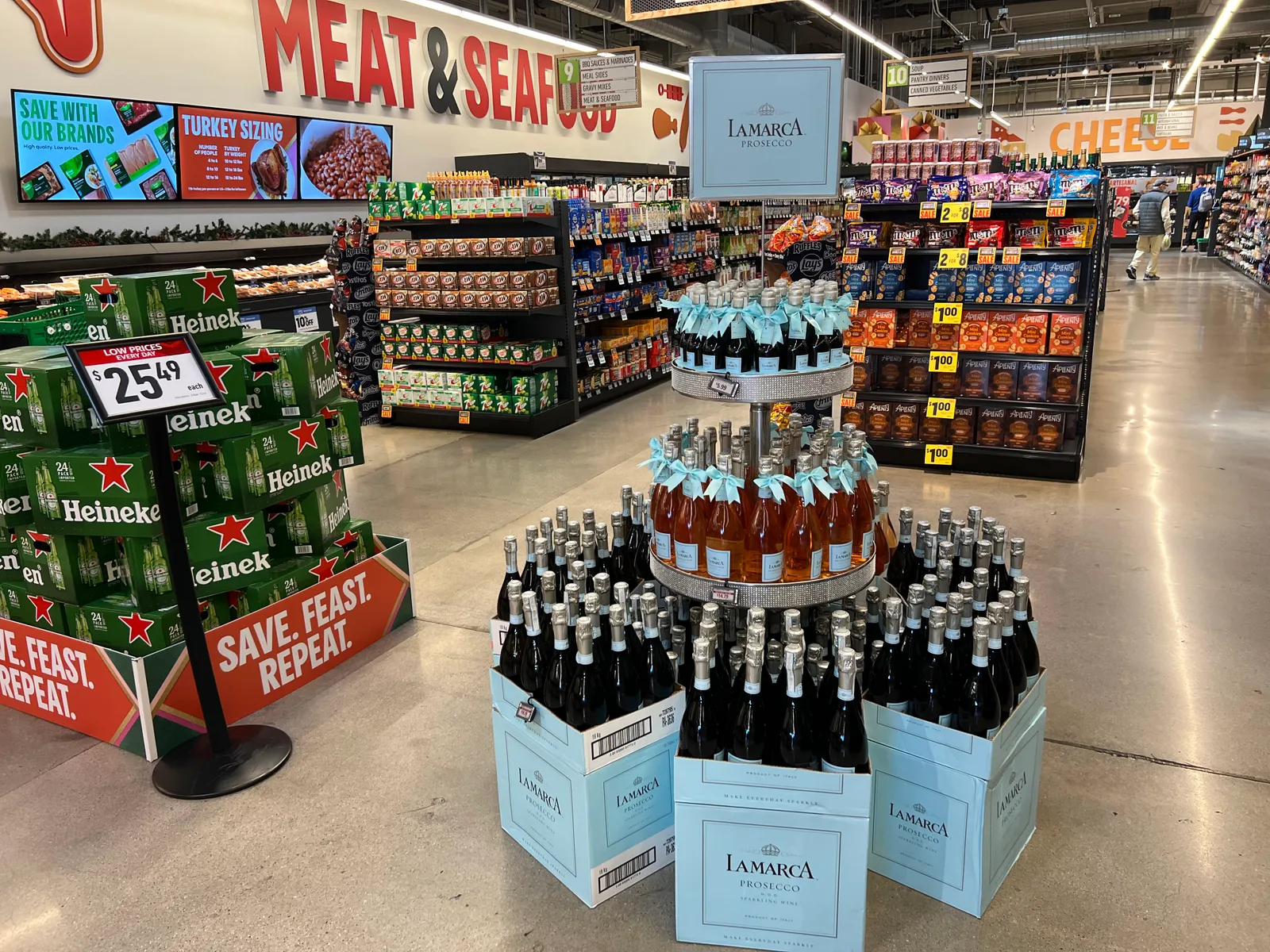
The store’s meat and seafood service counter is gone and more packaged items added, reflecting customer feedback. There are also new deals and merchandising aimed at meeting customer needs across grab-and-go and home prep. Peters pointed to an offer for a fresh roast chicken and two sides for $20 as an example of this renewed emphasis on meal solutions.
Situated next to the foodservice area is a Krispy Kreme stall that offers an assortment of fresh-made donuts and coffee — an addition that echoes the many in-store pit stops that grocers have added over the years in partnership with companies such as Starbucks.
The Woodland Hills store also showcased the subtle ways the revamp has downplayed Amazon’s branding and signature services. The walls around the customer service desk were emblazoned originally with the company’s signature orange hue and smiling swoop logo. Now, the space features a much more toned-down white, with an overhead sign that shows no trace of Amazon’s influence.
The store still has an “Ask Alexa” kiosk, but it’s tucked into a grocery aisle rather than getting prime placement near an end cap, as it had when the store originally opened in 2020. And while customers can still do their shopping with Amazon’s proprietary smart cart, the Dash Cart, the store also has several self-checkout stands.
Peters acknowledged that Amazon’s store technology, impressive though it is, cannot be the focus for Amazon Fresh. “What we’ve learned is that technology clearly is one of our differentiators. But we need to get the fundamentals right.”
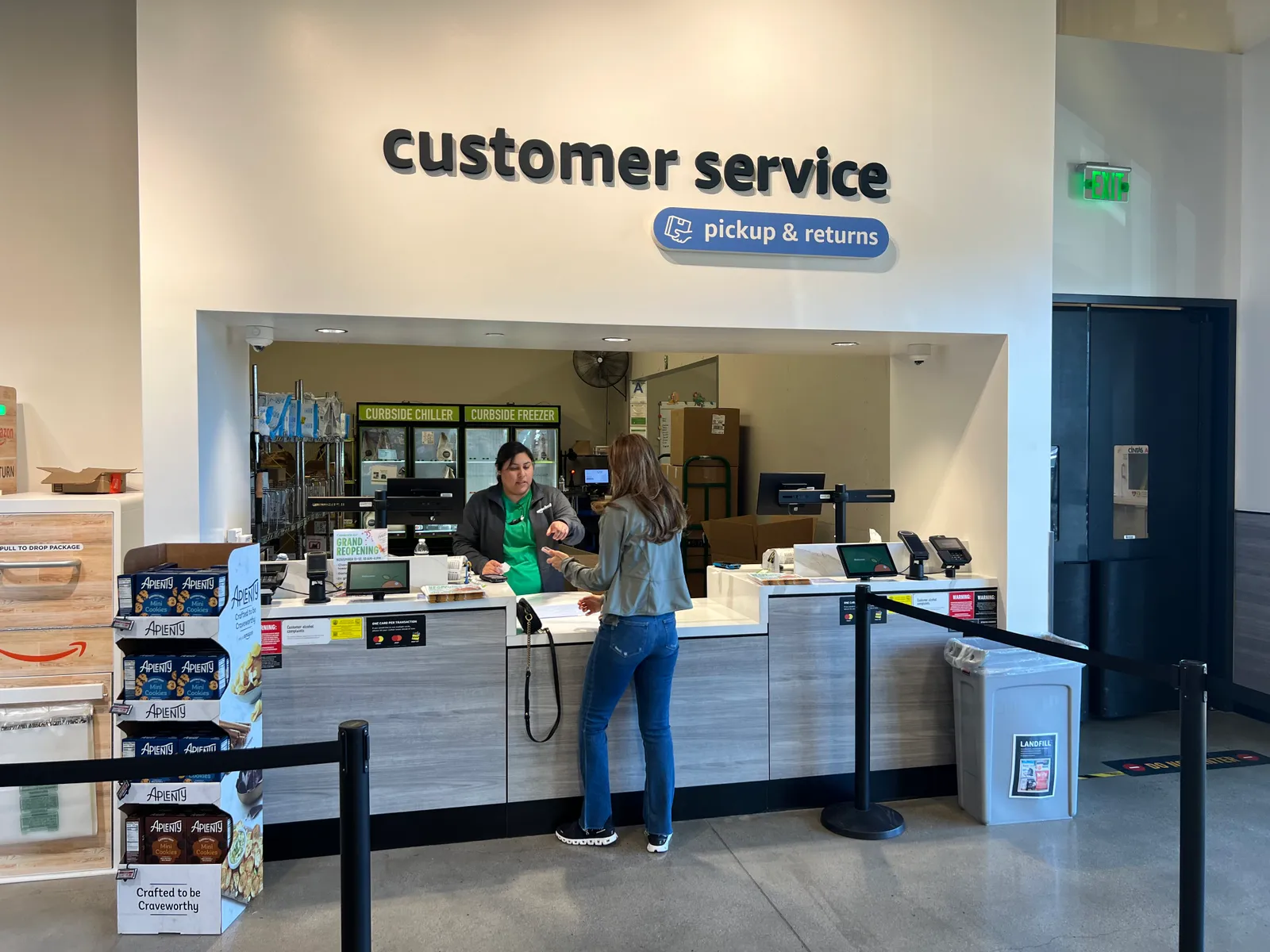
Amazon wants grocery consumers — but is the feeling mutual?
Amazon has struggled so far to gain a foothold in physical retail. Last year, the company closed its bookstores and 4-star locations. Earlier this month, it shuttered its only two Amazon Style stores, which attempted to stand out from other apparel retailers by offering technology that made personalized recommendations to shoppers.
But the company is determined to get grocery stores right because of the purchase frequency that happens in that industry, according to Natalie Berg, a London-based retail consultant and co-author of “Amazon: How the World’s Most Relentless Retailer Will Continue to Revolutionize Commerce.”
If Amazon can get consumers buying groceries through Amazon Fresh or Whole Foods every week, it will make the company the “first port of call” for other purchases, as well, she said.
“Amazon doesn’t need to become ubiquitous in grocery in the same way it does in non-food. It just needs to convert enough of its most loyal customers to their grocery offering,” Berg said.

Has Amazon cracked the code with Amazon Fresh version 2.0?
David Bishop, partner at grocery consulting firm Brick Meets Click, has visited the recently updated stores in Chicago and said they’re a definite upgrade. While the original store model called to mind Walmart and Costco stores, he said, the remodel seems to take cues from Wegmans and Publix.
“I think they addressed a lot of the visual merchandising shortcomings. They definitely created a warmer, more welcoming environment,” Bishop said.
Brick Meets Click’s research shows that Amazon Fresh prices its goods slightly lower than regional grocery stores, which could give it a leg up with price-sensitive consumers.
However, Bishop isn’t convinced that the new Amazon Fresh is compelling enough to detach shoppers from their regular grocery destinations. He also believes consumers are put off by the Amazon Fresh brand because it links a name consumers associate with technology, power and efficiency with freshness.
“The open question in my mind is whether consumers really trust Amazon to be a grocer,” Bishop said.
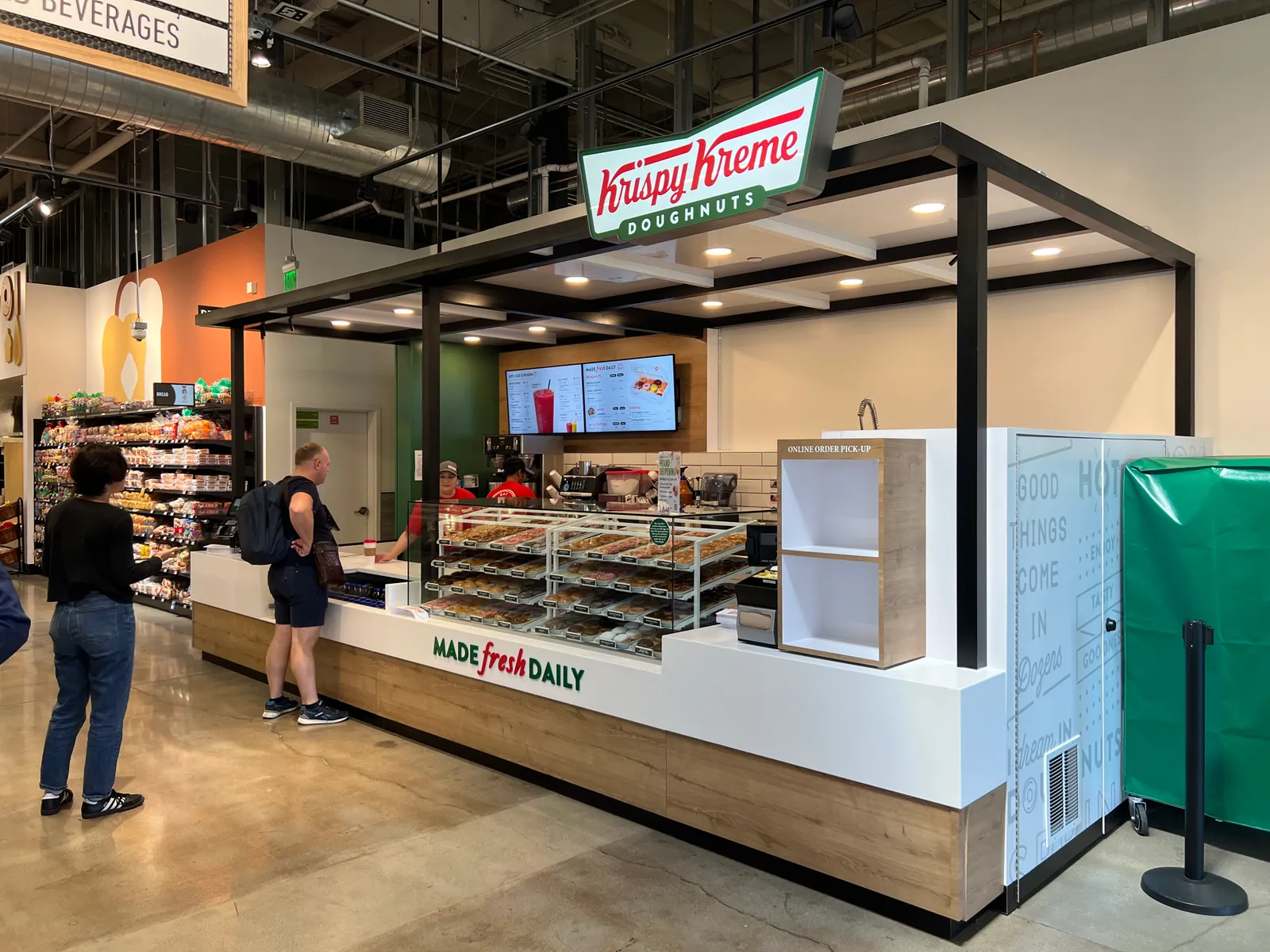
Berg, meanwhile, noted that Amazon has the ability to learn and adapt quickly and could ultimately bring meaningful changes to an industry that hasn’t changed much over the years. However, the company’s current collection of physical stores, online shopping and third-party services don’t yet feel cohesive, she said.
“I believe Amazon has the potential to revolutionize the way we shop for groceries, but its current proposition is muddled and underwhelming,” Berg said.
Amazon is working on its online services as well as its stores. This year the company has updated its delivery fees for Amazon Fresh and made delivery as well as pickup available to non-Prime members. The company also is working on a “unified cart” initiative that will allow customers to combine Amazon.com, Whole Foods and Amazon Fresh items into one online basket, Peters said.
Peters said she took the job at Amazon because it offered the rare opportunity to help build a grocery chain under a company that prioritizes innovation. “I’d much rather be running a business in which you can do that than in a traditional retailer where you’ve got 100 years of history.











